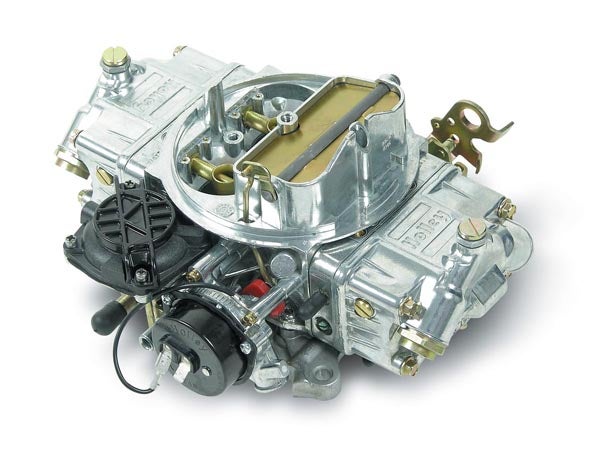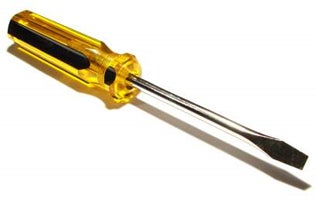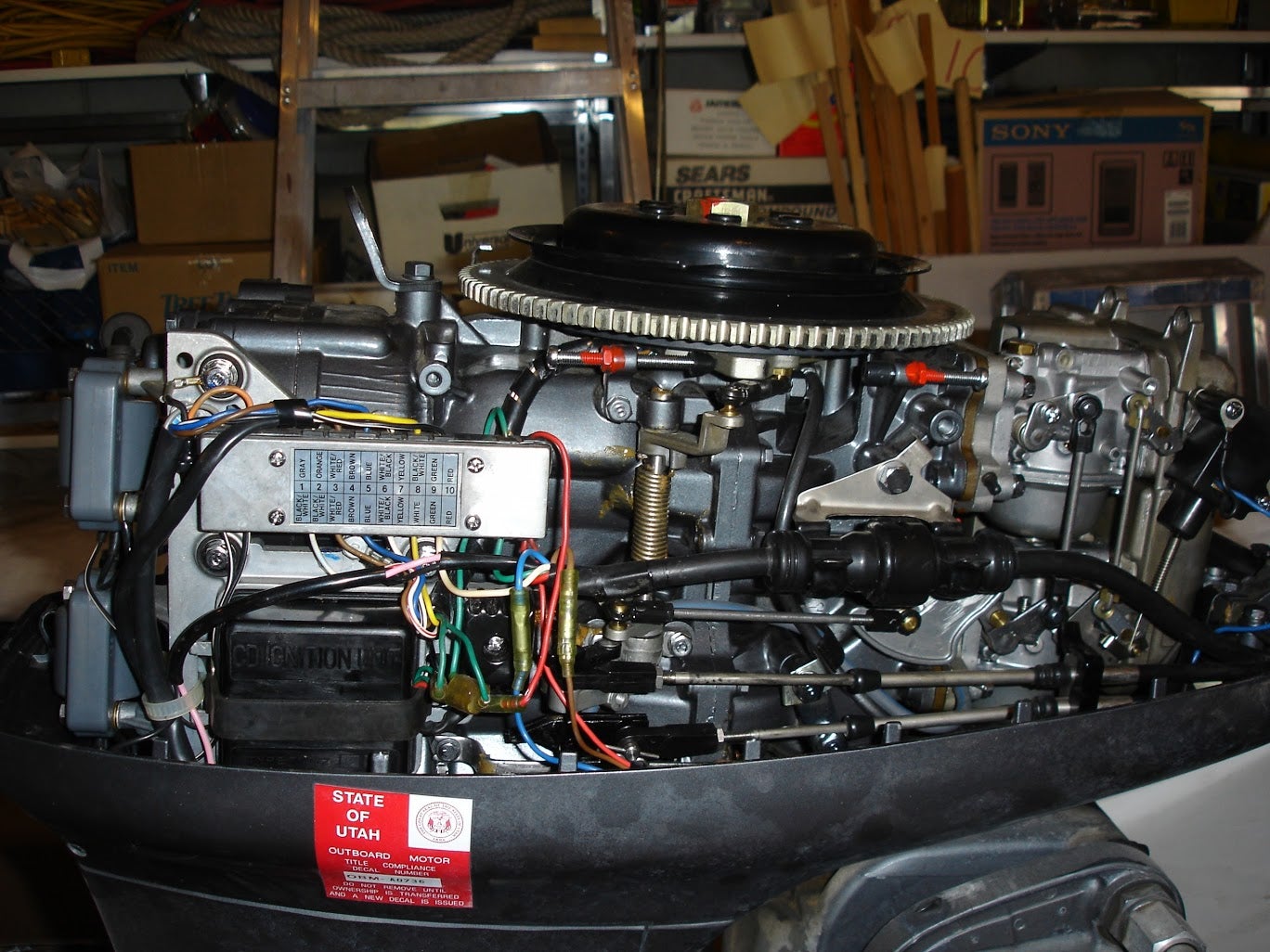 "quittywhip" (quittywhip)
"quittywhip" (quittywhip)
12/13/2013 at 12:50 • Filed to: carburetors, fiery death, project car hell
 2
2
 18
18
 "quittywhip" (quittywhip)
"quittywhip" (quittywhip)
12/13/2013 at 12:50 • Filed to: carburetors, fiery death, project car hell |  2 2
|  18 18 |

It's true.
I've owned cars with carburetors before and I'm not afraid to turn a wrench, but I have yet to successfully tune or rehabilitate a vehicle equipped with a carburetor. After owning many imported cars, most post-1989, my experience fixing cars has largely been limited to vehicles with electronic fuel injection. I'm kind of used to being able to plug in the parts and go. Sure, I have troubleshooted various problems on pre OBD II vehicles with some success. However, I remain somewhat ashamed of my inexperience and lack of ability when it comes to carbs, a staple of owning a classic American car.
A few years ago, I owned a 1989 Chevrolet Cheyenne V6 2WD 5-speed, equipped with a throttle-body-injection. Now I know, you'll say thats not exactly a carburetor, but it was my first experience with such. I was on the verge of selling it because it was a temporary DD (my Subaru was down). The truck was sitting some time and was running rough. It would stall out on me at random and sometimes I couldn't get it started again right away. I decided that the best course of action was to remove the TBI and put all new seals and gaskets in it, as I did the usual plugs, wires, etc already.
Simple enough?
I struggled to find replacements for the fuel lines coming from the back of the unit as they snapped off when trying to remove the TB, and that delayed things a couple weeks. Despite that frustration, the disassembly, cleaning, replacement and reassembly went well once I gathered the additional parts.
At least, that's what I thought until I put it back on the car. The car's misfire was still present, if not more pronounced, so frustrated me stuck on the 'For Sale' sign and I left the Chevy in front of the house for a week.
Luck would have it that I got a call on the truck and a guy wanted to come see it. I cleared the tools out of the cab, and popped the hood open just as the prospective buyer walked up. I gave him the keys and he started it up. It started hard, and stalled within a few seconds, and then he restarted it. The buyer was looking at the instrument panel and the radio. He seemed undeterred. I looked down at the engine humming quite smoothly and...
OH GOD! FIRE!
There were small flames licking around the throttle body as the truck was running. I leaned forward into the engine bay and blew on the flame. Stupidity, but the fire huffed out like the last candle on a birthday cake. The tire-kicker didn't even notice as he was playing with the new radio in the cab.
He didn't buy the truck.
I called a friend who was a former GM tech. He came out, waved a magic wand over the throttle body (I wasn't paying attention), replaced the distributor and the truck was running great again. I thanked him, threw him some cash, and sold the truck on eBay as quickly as I could.
I didn't play with a TBI or carbureted car after that.
In the quest to understand the CA DMV and smog laws, I have learned that all cars 1975 and older do not require adherence to the strict C.A.R.B. standard. I am now looking at older, carbureted vehicles (think BMW 2002, Datsun 240). My lack of experience and understanding of how to you know, not light my carb on fire, is making me anxious. It'd be one thing if my $1000 Chevy burned to a crisp due to my shade tree inability. That, I could have dealt with. It'll be another if I burn up one of my dream cars, at a much higher cost.
 HammerheadFistpunch
> quittywhip
HammerheadFistpunch
> quittywhip
12/13/2013 at 12:53 |
|
I hate carbs. I do. I have been trying to tune a Japanese outboard with crazy carbs for the last 2 years. No luck. Pain in the ass they are.
 Joe_Limon
> quittywhip
Joe_Limon
> quittywhip
12/13/2013 at 12:57 |
|
My personal experience with carbs is grumbling trying to get them working, and watching an unbolted carb jump off the engine block of an ARCA race car right by a few of my friends heads.
 CammedCTSV
> quittywhip
CammedCTSV
> quittywhip
12/13/2013 at 12:58 |
|
TBI is a great system, just replace the distributor module every year ($12) and change the oil and they will run forever. My 92 Camaro RS was a TBI 305 with a 5 speed tremec and 2.73 open differential. With no interior, A/C, power steering, and manual windows, she would knock down 31 mpg on the highway. Great for low end torque, bad at racing anything faster than an IS300
 Party-vi
> quittywhip
Party-vi
> quittywhip
12/13/2013 at 13:00 |
|

It's dangerous to go alone! Take this!
 RamblinRover Luxury-Yacht
> HammerheadFistpunch
RamblinRover Luxury-Yacht
> HammerheadFistpunch
12/13/2013 at 13:02 |
|
It really comes down to who built the carb and whether they were a total baboon about it. Country of origin is no indicator.
US: Carter, Rochester, all good, with some really bad ones lurking to catch you unawares. Walbro two-stroke carbs, usually pretty okay, Briggs carbs extremely susceptible to bad/eth gas but very easy to put right - CARB CLEAN ALL THE THINGS.
Britlandia: Webers, excellent, Solex a bit tetchy but workable, Zenith and most SU carburetors fair to garbage
Ireland: Most Tillotson carbs I've run across can eat a bag of dicks. Most, not all.
Japan: Honda - the best carbs in the world unless you somehow manage to cock them up, then god help you. Whatever the hell carbs they put on Onans I can't recall - irritating. Fuji/Robin/etc. DIE DIE DIE DIE DIE
 HammerheadFistpunch
> RamblinRover Luxury-Yacht
HammerheadFistpunch
> RamblinRover Luxury-Yacht
12/13/2013 at 13:05 |
|
Kei-Hin?

 Ian Duer (320b)
> quittywhip
Ian Duer (320b)
> quittywhip
12/13/2013 at 13:09 |
|
I'm also guilty of carb-fear. I know how they work in principle but I'm more comfortable breaking out the multi-meter.
 RamblinRover Luxury-Yacht
> HammerheadFistpunch
RamblinRover Luxury-Yacht
> HammerheadFistpunch
12/13/2013 at 13:14 |
|
Keihin, often found on Hondas. Proving thesis one of Japanese carbs (aka if cocked up you're boned).
 HammerheadFistpunch
> RamblinRover Luxury-Yacht
HammerheadFistpunch
> RamblinRover Luxury-Yacht
12/13/2013 at 13:16 |
|
define "cocked up"....
I've only played with the mix screw at this point (well, and cleaned it)
 Dr.d
> quittywhip
Dr.d
> quittywhip
12/13/2013 at 13:18 |
|
They're pretty simple once you understand the concept. Watch a few youtube videos on rebuilding and tuning them, search for some diy's and start getting your hands dirty. You'll figure it out. Just remember there's no magic going on, it's a very simple mechanical device.
The carb on my '69 2002 was pretty simple. I always kept a screwdriver in the glovebox incase I needed to adjust it. If you get one you'll become familiar with it pretty fast.
Just as simple but way more of a pita to work on were the 4 carbs on my old SRAD gsxr 600. I must have rebuilt those damn things 20 times thanks to crud in the gas tank. I was happy to get rid of that thing due to the annoyance of having to go through the ritual of removing the seat, tank, airbox, reaching in within the long Phillips head and unscrewing each hose clamp, actually rebuilding each carb, fitting the carbs and airbox all back together etc etc.
 RamblinRover Luxury-Yacht
> HammerheadFistpunch
RamblinRover Luxury-Yacht
> HammerheadFistpunch
12/13/2013 at 13:19 |
|
Well, it's luck of the draw. I almost never see them go wrong (at least, if run regularly), but if they somehow manage to go wrong with or without intervention, they're delicately balanced enough that they'r'e hell to get right. Because of the jetting and so forth and possibly some very critical breathing/sealing, they don't seem to give as clear signs *how* they've gone wrong. Just shitty/arbitrary running across the board.
 HammerheadFistpunch
> RamblinRover Luxury-Yacht
HammerheadFistpunch
> RamblinRover Luxury-Yacht
12/13/2013 at 13:24 |
|
it runs, but its not feeling like 55 hp and it occasionally stalls out. Here, take a listen
 RamblinRover Luxury-Yacht
> HammerheadFistpunch
RamblinRover Luxury-Yacht
> HammerheadFistpunch
12/13/2013 at 13:40 |
|
Youtube's blocked at work - I may catch up on this later - but my suspicion would be incomplete clogging/stray matter lining some but not all of the high speed jets. No certainty there since I'm not hearing it, but if I correctly recall my Keihins on Hondas, they tend to have eleventy billion microscopic little jet holes to actually feed at high speed, in a progression. All technically fed by the same adjustment, but minor clogging (i.e. deposits) can close them up part-way and lead to progressive leaning in various bands. Also, since there's not a huge pressure difference to feed said jets, they're exposed to any flow irregularities in the float valve.
Rx: Dr. R. Rover:
Make sure any and all float valve irregularities are gone, clean any main jet orifice that exists in the bottom of the bowl thoroughly, and using a bag tie or similar tiny wire laboriously clean every single hole in the carb throat. Beyond that and running the carb on gas+seafoam or carb cleaner a bit, don't know what to tell you.
 BiTurbo228 - Dr Frankenstein of Spitfires
> quittywhip
BiTurbo228 - Dr Frankenstein of Spitfires
> quittywhip
12/13/2013 at 14:20 |
|
I'm not so much afraid as unfamiliar.
I've worked on two carbed cars, the Spitfire with SUs and the Fiat with a Weber downdraft. The Spitfire was simple, the Fiat a little complex. Neither of which I've managed to get running right, but I'm beginning to think that that's not a carb issue with either of them.
 Nothing
> quittywhip
Nothing
> quittywhip
12/13/2013 at 14:26 |
|
I hated the Z/S carb on my MGB. Proving the old adage that a car runs best right before it dies, I leaned that sucker up, and next thing you know, I was billowing smoke. Pulled over, turned the key off, and listened to the detonation. When I finally pulled the head, #1 piston was fused to the cylinder wall. But wait! There's more! I even ran my R/C nitro cars too lean and scrambled the engine in those. Funny pulling those little hings apart and seeing tiny little metal bits of what used to be moving parts.
I haven't had a carb'd vehicle since. I think. That was quite a while ago, both in time, and in vehicles.
 CAFIFTY
> quittywhip
CAFIFTY
> quittywhip
12/13/2013 at 19:09 |
|
I've always just taken them apart, cleaned them, put them back together, and then they work.
 BJohnson11
> quittywhip
BJohnson11
> quittywhip
12/13/2013 at 19:56 |
|
Yea, carbs and their complexity can seem intimidating, but tuning them (and engines in general) is really quite basic. Basics for running are fuel, air, and spark (and the spark needs to happen at the right time). Once timing is good, carbs really only have a couple of adjustments. Air/Fuel mixture, accelerator pump, idle adjustment, maybe rejetting when you get complicated. But the best part? It can almost all be done with a screwdriver.
A pre 75 car would be a great way to learn.
 Philbert/Phartnagle
> quittywhip
Philbert/Phartnagle
> quittywhip
12/14/2013 at 09:36 |
|
Get a Holley carb and a copy of Alex Warlordy's, Supertuning Holley Carburetors.
Read the book and closely follow any advice or directions therein. I have used it for years and it has never led me astray when tuning Holley carbs.